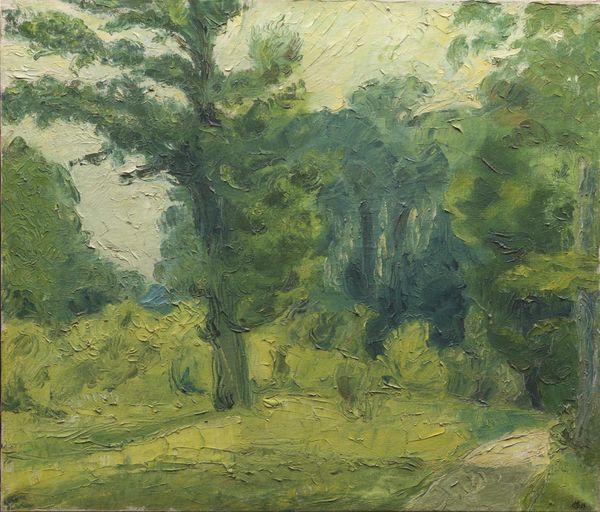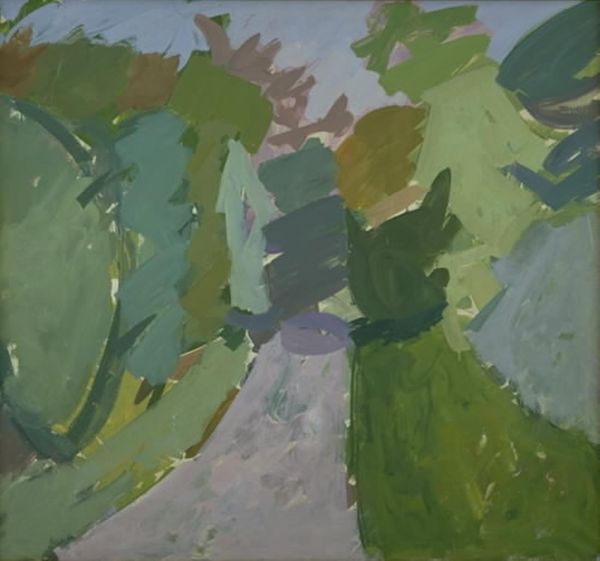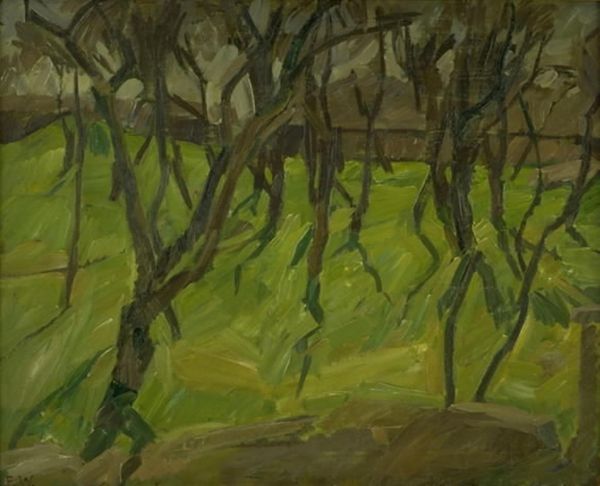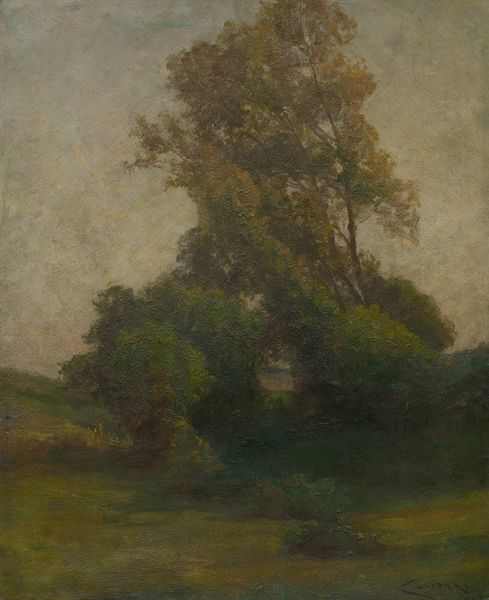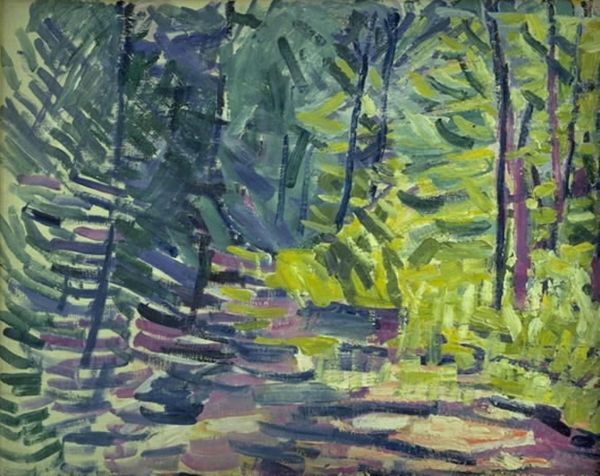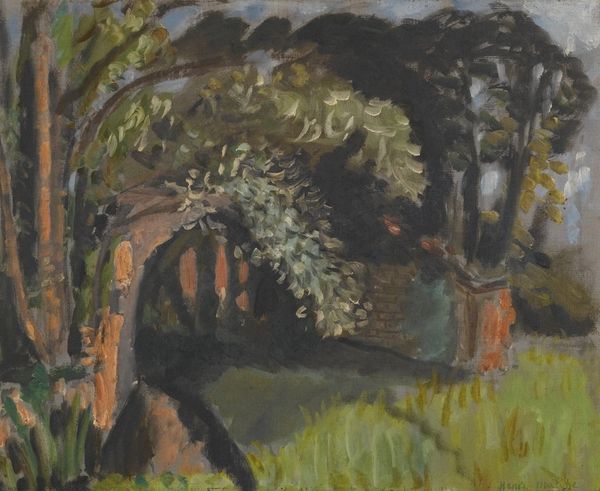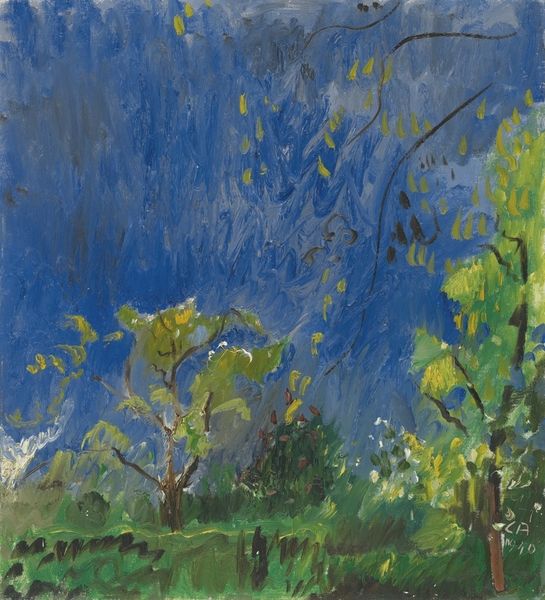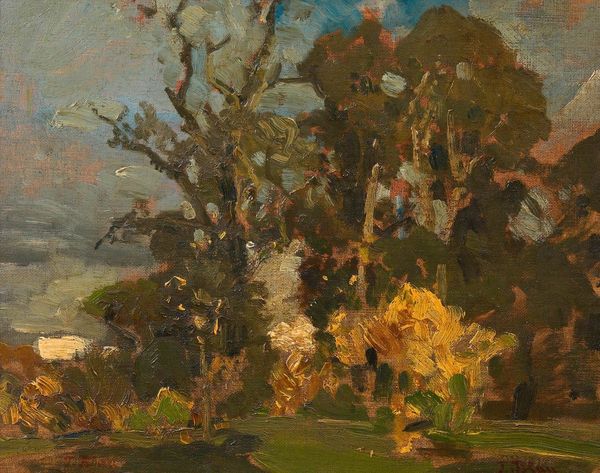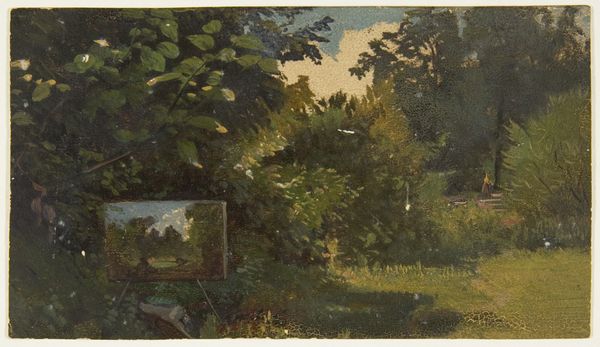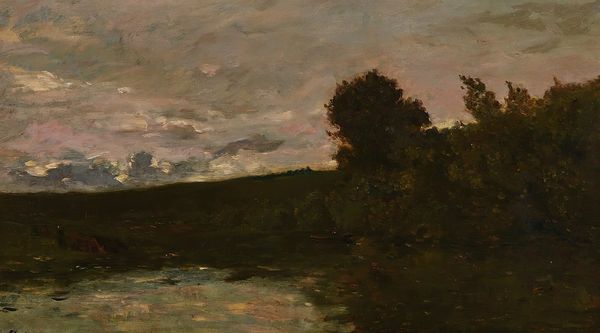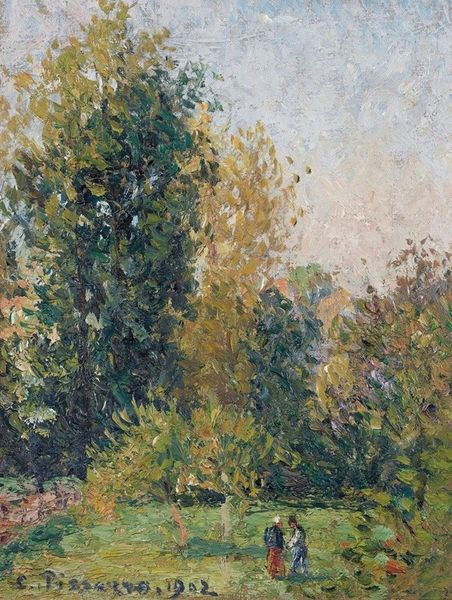
painting, oil-paint, canvas, impasto
#
painting
#
oil-paint
#
landscape
#
canvas
#
impasto
#
expressionism
#
modernism
Dimensions: 54 cm (height) x 69 cm (width) (Netto)
Curator: This is Harald Giersing’s "In the Glade," painted in 1915. You can see it here at the Statens Museum for Kunst. Editor: My first impression is almost claustrophobic, despite it being a landscape. That pervasive green, the heavy brushstrokes – it feels dense, almost airless. Curator: I'd agree. Let’s consider Giersing's process and his use of materials. The impasto, the thickness of the oil paint on the canvas, really contributes to that sense of weight, doesn’t it? It’s far from a delicate landscape; it feels worked, constructed. Editor: Exactly! It moves me to think about how landscapes at that time—especially those with hidden glades—might symbolize exclusion or the search for refuge for certain folks due to rapidly shifting cultural politics in pre-war Europe. Curator: That’s interesting to consider in 1915, as we move through modernity. Now, looking closer, you see how the individual brushstrokes are quite visible; you could see each color used like individual gears within a larger manufacturing framework—they only make sense if working together. Editor: And that restricted palette, all those shades of green. To me, it speaks to something deeply internal. Are we witnessing, perhaps, a meditation on nationhood or a questioning of its supposed naturalness, especially for marginalized people? The overwhelming use of that singular pigment and technique becomes powerful, if that is indeed the artist's focus. Curator: Well, regardless, it underscores how even the seemingly idyllic can carry layers of societal reflection—but Giersing also brings an intensely modern sensibility, challenging traditional landscape painting conventions, even at a foundational production level with how he engages with color itself. It challenges the accepted standards, I'd say, especially as those standards pertain to painting 'pretty pictures' for popular consumption. Editor: I find it remarkable how it offers an immediate visceral experience and then deepens into potentially richer cultural dialogues the more you let yourself perceive beyond surface representation. It makes you wonder—how could the artist be engaging with questions of belonging and alienation, by evoking them through paint and canvas? Curator: Definitely something to keep contemplating. Thank you. Editor: Indeed. And thank you.
Comments
No comments
Be the first to comment and join the conversation on the ultimate creative platform.
